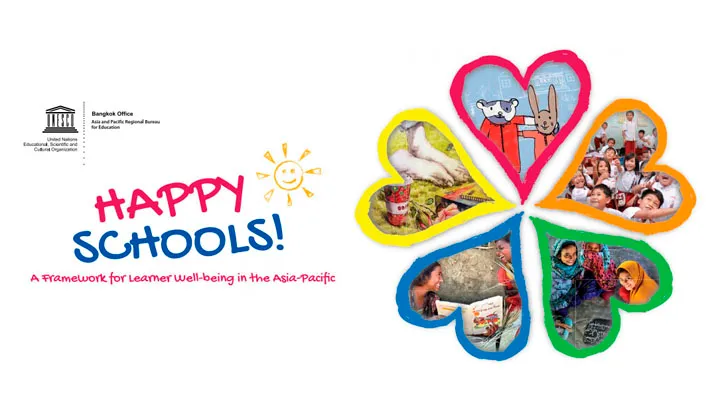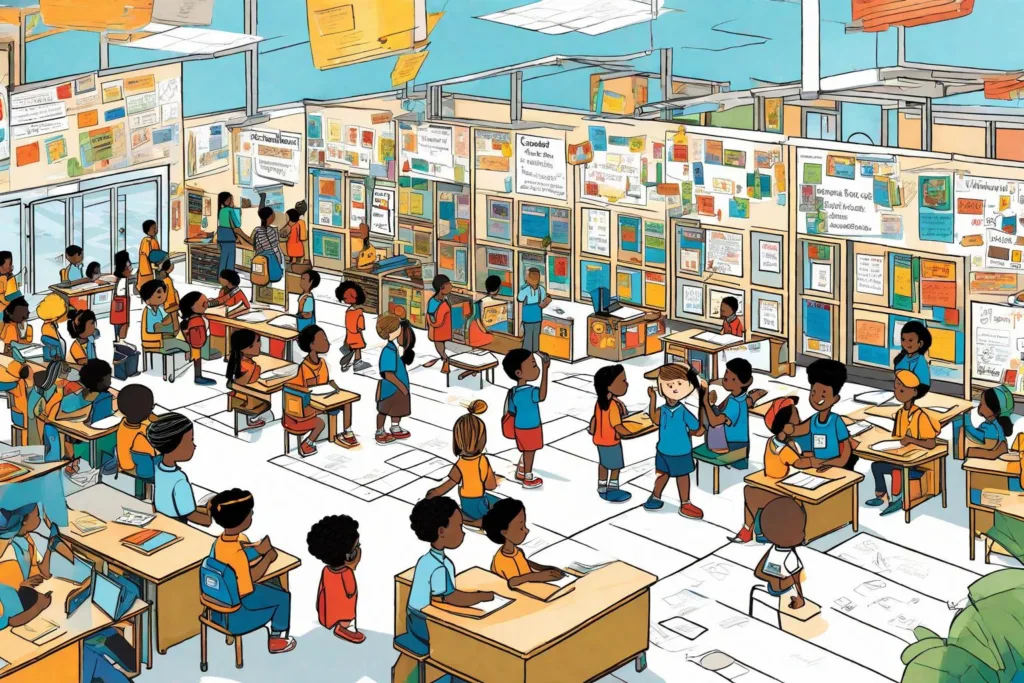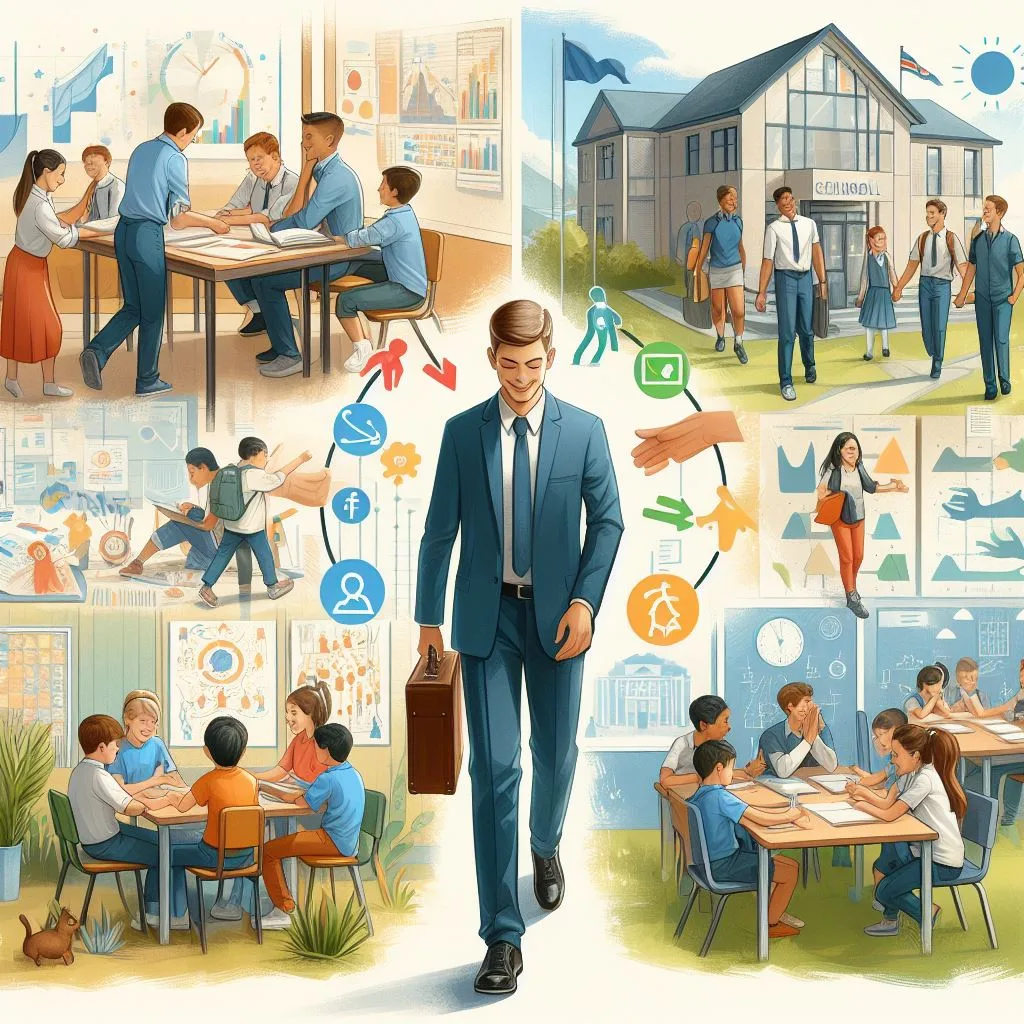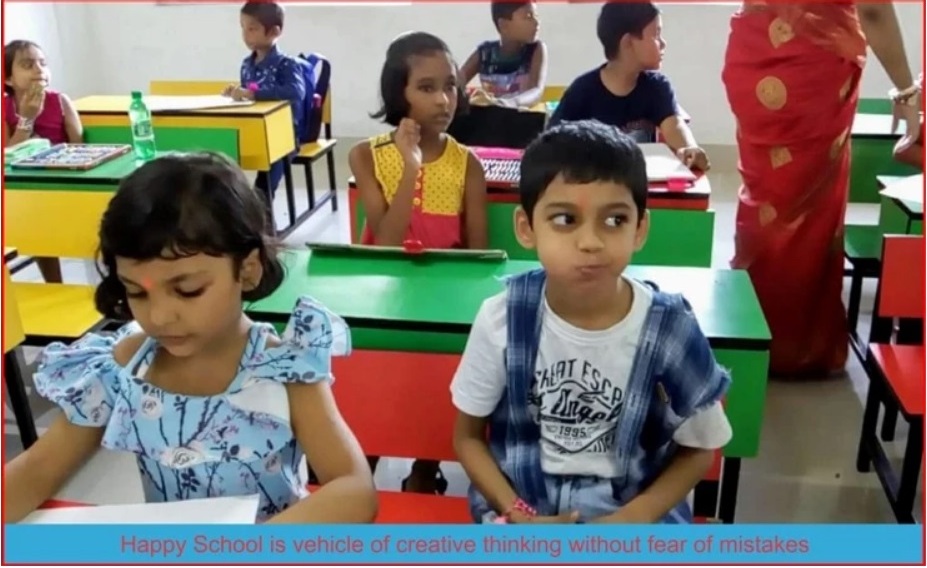Introduction
Creative thinking –The Concept of a Happy School Although new to the world, India as its tradition embraced the idea of happy and well-engaged schooling through its Gurukulam seva.
UNESCO and Happy School Concept- Creative thinking

In 2014, UNESCO introduced the foundational framework of the Happy School concept, focusing on the well-being of young learners. This article delves into the Happy School model, which places a strong emphasis on the happiness and comfort of students.
To identify Happy School environments, UNESCO categorizes the framework into three main pillars: People, Process, and Place.
Within the People category, the model highlights the importance of fostering positive and relaxing relationships within the educational community. This includes cultivating friendships and relationships among students and staff, which are seen as fundamental practices of a Happy School. Additionally, the model emphasizes the significance of teachers’ attitudes and attributes, such as kindness, enthusiasm, and fairness. Teachers are encouraged to serve as inspiring, creative, and joyful role models for their students. Another key criterion in this category is the promotion of mutual respect and acceptance among all members of the school community.
Creative thinking

The culture of respect and acceptance permeates throughout the entire school community, ensuring inclusivity and a sense of unity to enhance productivity in a positive environment.
In the second category, which focuses on processes, learning and teaching methodologies are viewed as essential tools for promoting the well-being of learners in a Happy School. This includes addressing issues such as excessive homework, lack of playtime, and continuous exam pressure. The goal is to identify a reasonable and fair workload for students that allows for a balance between study and play, as well as between rote memorization and fostering creativity.
creative thinking
The second key aspect highlighted in this category is the importance of identifying obstacles or barriers that hinder creative thinking without fear of making mistakes. This concept emphasizes the freedom for learners to express their views without the fear of being judged.

In essence, it’s about “Learning without fear.” Consider this scenario: A student scores a perfect ten in a civics exam about honesty but actually cheated to achieve such high marks. Or, we study biology to protect the environment, yet some students who excel in biology exams litter trash in the streets. The primary purpose of education should be to improve our real-life actions and contribute to our country’s development. We are not learning to become geniuses or to increase our brain size! As Dale Carnegie, the American author, said, “Knowledge isn’t power until it is applied,” reflecting the essence of this study.
Creative Thinking
Another important aspect is ensuring that the content and curriculum provided to learners are relevant and up-to-date. Any redundant or unnecessary information should be replaced with new, well-researched topics that learners can apply daily.
Moving on to the third category, focusing on the physical environment and atmosphere of the school is crucial for assessing the level of happiness in any educational institution. Creating a relaxing and friendly learning environment is among the most critical factors of a happy school. The concept of “Sansakara,” or good manners and etiquette, is considered fundamental in fostering happiness, where greetings and smiles are encouraged. Music, arts, and a vibrant, meaningful approach to teaching are essential for cultivating positivity in the school environment.
Creative Thinking
A safe environment that promotes shared study, play, and engagement among learners is truly blessed with a happy energy. The role of management and leadership is crucial in fostering a positive and congenial atmosphere for all learners.
Creative Thinking
Regarding the physical environment, providing open, green spaces for creative learning to enhance learners’ happiness and well-being is also emphasized. Outdoor areas filled with greenery, where learners can connect with nature, are paramount for creating a happy school.
Conclusion
creative thinking
Whereas education and learning are recognized as fundamental vehicles to enhance the happiness and well-being of learners steps must be taken to bring metamorphic change in the education system to include creative forms of learning that allow for learners’ unique talents and strengths to shine, while the same time recognizing that happiness is something collective that can be spread through learning experiences and foster friendships and healthy relationships among the stakeholders of the school community.
More Articles
Unveiling the Total Solar Eclipse 2024! Experience the Mesmerizing Celestial Ballet
Amazing ! Reinforcement Learning from Human Feedback: Bridging AI and Human Intelligence
Quality Education- The Crucial Role of Education Charter in Evaluating & Recognizing
“Exclusive & Elite Insights: Unveiling the Top 10 International School in India 2024
Academic Excellence Unveiled: Saraswati World School Secures Top Spot in Hooghly and Emerges
West Bengal’s Top 25 CBSE Schools: A Pathway to Your Child’s Success
Building a Strong Foundation for Lifelong Learning: Early Childhood Care and Education in India
Preschool Education in India: A must to know Rules, Regulations, and Guidelines
Discover more from News 24 Media
Subscribe to get the latest posts sent to your email.



[…] consider reading article on happy school […]
[…] Happy School Concept […]
[…] Check out articles […]
[…] Check out articles […]
[…] Issue in education system Happy School is the vehicle of creative thinking without fear of mistakes […]
[…] Happy School is the vehicle of creative thinking without fear of mistakes […]